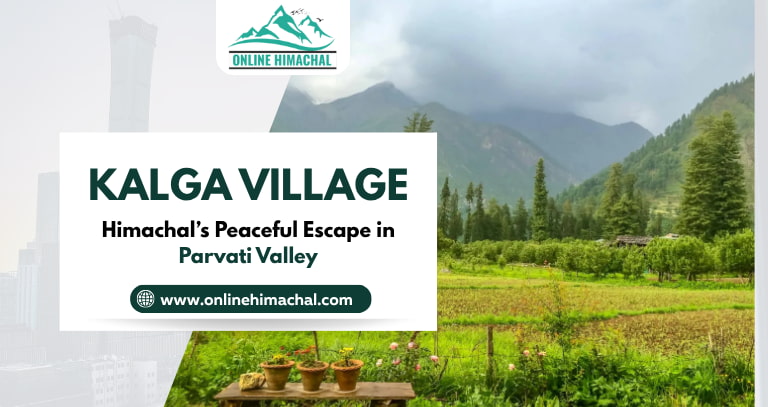Kalga is a small and calm village in Himachal Pradesh, hidden above the clear blue waters of the magnificent Parvati Valley. Surrounded by tall mountains covered in trees, Kalga feels like a quiet place far from busy cities. Kalga is best for people who would like to relax, walk in nature, and enjoy the pure simplicity of village life. A walk through Kalga, where you will see apple trees, pretty wooden houses, and hospitable local people, will give you a different experience. Travelers visit Kalga to rest, think, and enjoy the ambiance of the village. If you love nature and peace, Kalga Village is an excellent destination on Earth. It’s a hidden gem, a secret garden, waiting for you to come explore it. This comprehensive travel guide will help you know more profoundly about the Kalga Village, along with the best time to visit, how to reach it, attractions to explore, and more.
Table of Contents
Overview of Kalga Village, Himachal Pradesh
Kalga Village is a charming and peaceful area in the Parvati Valley of Himachal Pradesh. It is surrounded by towering snowy mountains, green forests, and beautiful apple orchards, which one should surely have a sight of. At an elevation of 2,500 meters above sea level, Kalga is an adventure hub for trekkers heading on to the Kheerganga trek and the Pin Parvati pass. You will find charming wooden houses that create a peaceful living environment away from the hustle and bustle of urban life. The people here have a simple way of life and grow and eat their own food.
A large percentage of families that live in Kalga rely on organic farms to produce their own food, which is why several local homestays provide meals that are healthy and tasty. The village itself has a historical significance, serving as a stopping point for pilgrims, and visitors enjoy walking through apple orchards and pine forests, taking quiet walks in the valley. Kalga is truly a hidden gem of the Himalayas.
How To Reach Kalga Village, Himachal Pradesh?
If you are heading to Kalga Village in the peaceful Parvati Valley in Himachal Pradesh, then here is how you can get there step by step:
1. Start Your Trip from Delhi or Chandigarh
It is convenient to start this trip from either Delhi or Chandigarh. From here, you can board a Volvo bus to Kasol from either of these locations. The overnight buses are a popular and simple way to reach the mountains.
2. Get from Kasol to Barshaini
After arriving in Kasol, you will travel to Barshaini, the last motorable point before Kalga. It is only 16.6 km away, and you can take a local bus or hire your own cab to get there faster through the windy roads of Parvati Valley.
3. Travel from Barshaini to Kalga
At Barshaini, you will end the road journey from this point:
- Cross the dam on the Parvati River
- Then it’s a 30 to 45-minute uphill trek on forest trails and village paths.
- This will take you to Kalga Village, a peaceful and beautiful place situated among apple trees and snow-capped peaks.
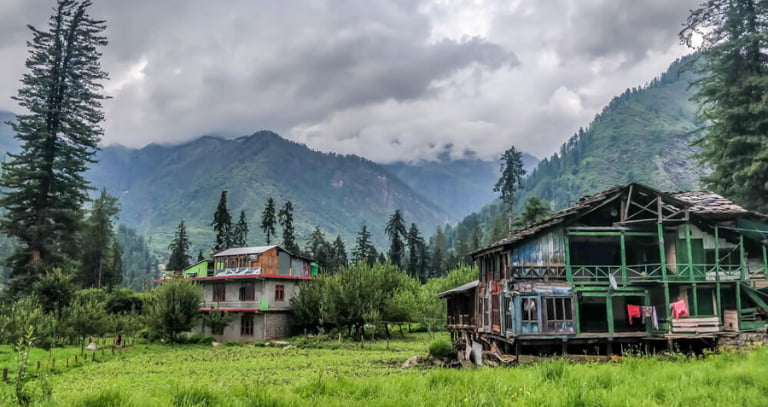
Best Time to Visit Kalga Village
Since Kalga can be visited year-round, depending on the type of weather and experience you enjoy, here is what you can expect throughout the year.
1. Summer (April to June)
- Temperature: 8°C to 20°C (Average 16°C)
- Weather: Pleasant, sunny, with occasional rains at the end of the season
- Rainfall: 50-150mm in May and June
- Humidity: 60% – 70% by June
Activities: Stargazing, hiking, and amazing views of the mountains
2. Monsoon (July to September)
- Temperature: 12°C – 15°C
- Rainfall: Heavy rains (up to 1000 mm)
- Humidity: Can go up to 88%
- Conditions: The village has turned lush green and peaceful, but the paths can be muddy and slippery.
Tips: Only travel if you can go in the rain and appreciate the beauty of the monsoon landscapes.
3. Winter (October to February)
- Temperature: 5°C and 10°C,
- Rainfall: Light rains (up to 30 mm).
Tip: It is an ideal time for snow fans, but it can be quite cold for some travelers.
Sisters of Kalga Village: Pulga and Tulga Villages
Similar to Kalga, the nearby villages of Pulga and Tulga are peaceful villages in Parvati Valley. Often referred to as “sister villages” of Kalga, Pulga, and Tulga are right around the corner and a short trek away. They share the same pace of life as Kalga with little noise, lots of beauty, and a love for preserving their traditional wooden houses. Each of the villages has its own unique wonders that must be explored.
- Pulga: Pulga is recognized for its wonderful “Fairy Forest”, an inspiring pine forest that attracts lovers of nature and hikers. The vibe is simple overall, with fun cafes and homestays that allow guests to be with nature.
- Tulga: Tulga is not as well-known or trafficked, but is extremely comfortable. With a more traditional vibe, it is good for those wanting a rural experience instead of an immersive culture.
When visiting Kalga, also visit Pulga and Tulga, its two sister villages. These three villages are a peaceful trio of untouched beauty in the middle of Parvati Valley.
Attractions To Be Explored Near Kalga Village
Kalga Village is surrounded by a range of attractions. After having a look at Kalga, visitors can seek extended stay at the following nearby places:
1. Manikaran
Manikaran is just 5.2 kilometers from Kasol and is known for its natural hot springs and Gurudwara. Additionally, it is the best place to stop for a warm bath and meal if you are exploring the valley.
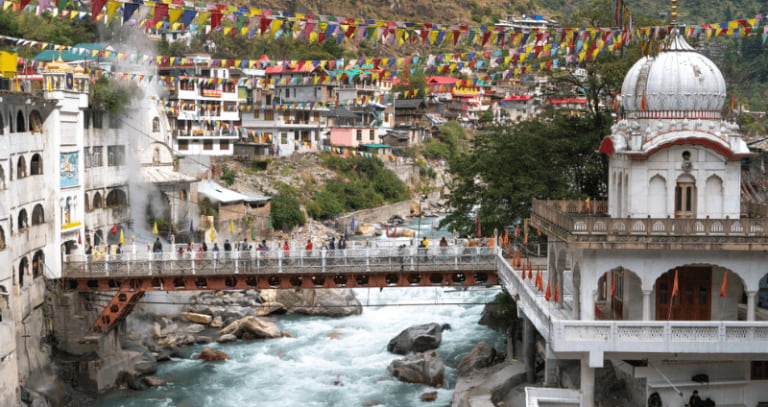
| Place | Manikaran |
| Distance & Location | 5.2 km from Kasol |
| Known For / Highlights | Natural hot springs, Gurudwara Shri Manikaran Sahib |
| Additional Info | Ideal stop for a warm bath and meal while exploring the Parvati Valley |
2. Kheerganga
Kheerganga is one of the best treks near Kalga Village. Kheerganga sits at a higher altitude than Kalga and is accessible on a 10-kilometer forest trail that starts at Kalga. You will discover the hot water spring in the camping area at Kheerganga.
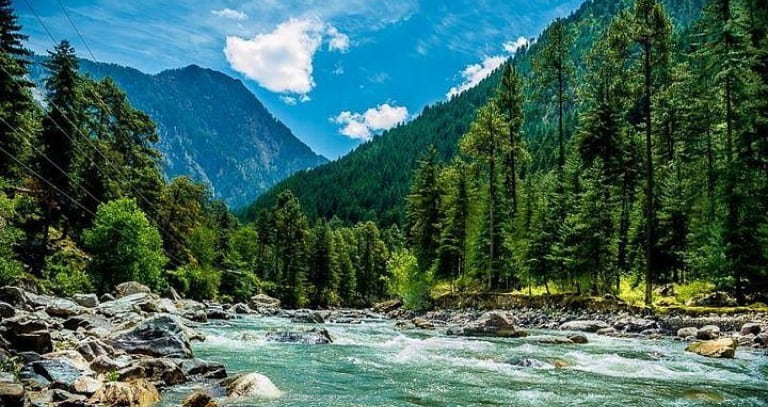
| Place | Kheerganga |
| Distance & Location | 10 km forest trail from Kalga |
| Known For / Highlights | Famous trek with hot water spring in the camping area |
| Additional Info | Popular trekking destination, sits at higher altitude than Kalga |
3. Nakthan
Nakthan is a small village that lies about 5.6 kilometers from Tosh, and it is also located on the trekking route to Kheerganga. Nakthan connects with Kalga’s trail near Rudranag.
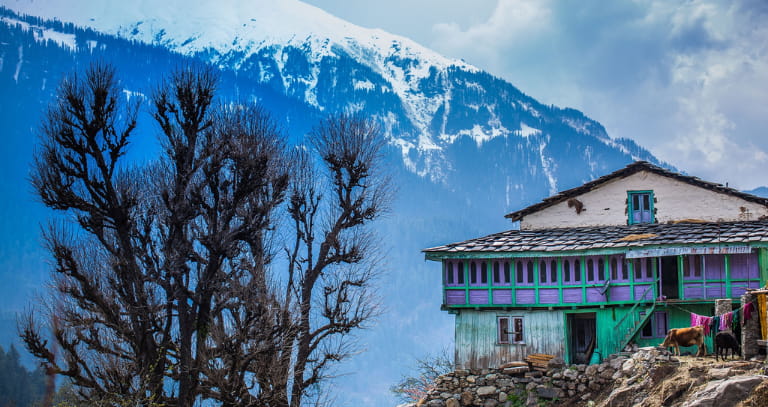
| Place | Nakthan |
| Distance & Location | 5.6 km from Tosh |
| Known For / Highlights | A peaceful village on the trekking route to Kheerganga |
| Additional Info | Connects with Kalga’s trail near Rudranag |
4. Rudranag
Rudranag is also a small village on the trail to Kheerganga. Rudranag has very limited stay options, but adds its quirks and beauty to the trek.
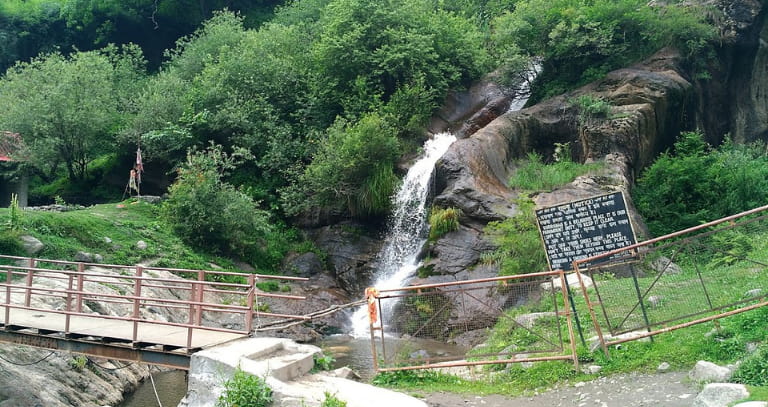
| Place | Rudranag |
| Distance & Location | En route to Kheerganga |
| Known For / Highlights | Small scenic village with limited stay options |
| Additional Info | Known for Rudranag waterfall and a rest point during the Kheerganga trek |
5. Kasol
Kasol is an established hill station situated in the Parvati Valley, Himachal Pradesh, and is barely 18 kilometers from Kalga. Both Indian and foreign tourists can visit Kasol. Kasol can also be used as a base point for different sights and areas in the region, such as Kheerganga, Tosh, Chalal, Malana, and Kalga.
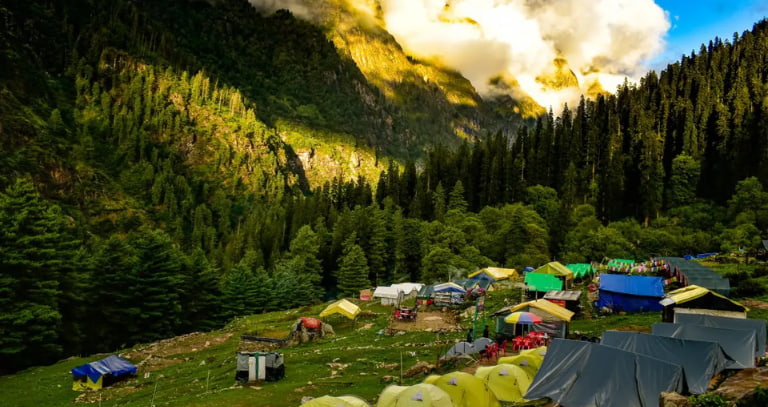
| Place | Kasol |
| Distance & Location | 18 km from Kalga |
| Known For / Highlights | Popular hill station in Parvati Valley |
| Additional Info | Tourist hub and base point for exploring Kalga, Kheerganga, Tosh, Chalal, Malana |
Conclusion
Kalga Village is an excellent getaway for travelers who want to disconnect from the chaos of urban life and reconnect with nature. Established in the quiet Parvati Valley, Kalga Village is the best spot surrounded by outstanding scenery, simple mountain living, and generous hospitality. Kalga Village’s beauty lies within its tranquillity, splendor, and spiritual peace. Therefore, you will find Kalga Village to be memorable and enriching. So, if you are looking for a little peace and quiet amidst scenic views and a taste of authentic Himalayan culture, Kolga village should certainly be at the top of your travel bucket list.
Also Read – Pulga Village Guide: The Hidden Soul of Parvati Valley
